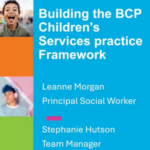
Dedicated funding for adult social care in England will rise by just over £1bn next year, according to government plans.
However, this falls far short of the estimated £1.8bn in extra costs facing councils, chiefly driven by rises in employers’ national insurance contributions (NICs) and the national living wage(NLW), the Association of Directors of Adult Social Services has warned.
The funding was set out in a Ministry of Housing, Communities and Local Government (MHCLG) policy statement on the local government finance settlement for 2025-26, published last week. This provided further detail on announcements made in the October 2024 Budget.
£1bn in extra funding
The extra money is made up of projected increases in the adult social care precept (£650m) – the element of council tax that is ring-fenced for the sector – and adults’ services’ share of a £680m rise in the existing social care grant, which amounts to about £400m.
Though local authorities will have further funding they can use on adult social care in 2025-26, the sector will need to compete with other services for this, several of which – including children’s services – are also under severe pressure.
Responding to the news, ADASS chief executive Sally Burlington said: “Whilst the additional funding is welcome, the 2025-26 budget doesn’t provide local councils with enough to cover the increase in the cost of care due to the recent national living wage (NLW) and employer national insurance rise and the growing numbers of us needing more complex care and support.”
Minimum wage and tax increases
The NLW is due to rise from £11.44 to £12.21 an hour in April 2025, benefiting many thousands of low-paid care workers, but costing independent providers an estimated £1.85bn next year, according to think-tank the Nuffield Trust.
The trust has also calculated that the rise in employers’ NICs would cost providers a further £940m in 2025-26. It said all but the 2% of the largest providers would have to pass on these costs on to funders – who are mostly councils – but warned that authorities were not being sufficiently resourced to pick up the tab.
A survey by the Care Provider Alliance (CPA), an umbrella group for provider representative bodies, found that most services would have to cut jobs and care on the back of the changes, without further government funding.
Councils ‘will be forced to ration care’
Burlington echoed these warnings on the back of the MHCLG figures, adding: “Without addressing this funding gap, local councils will be forced to further ration care and support, focusing on those people with the greatest needs.
“People waiting for care are likely to face further delays, risking their health deteriorating further and those paying for their own care may be forced to cut back on support due to increasing costs, making their lives more difficult.”
The government has pledged to cover councils for the increased direct costs they will face from the rise in NICs and will provide further information later this month when it sets out the provisional local government finance settlement for 2025-26 in detail.
Call for further funding
However, it has not pledged any funding to cover authorities for the knock-on impact on providers they commission.
Burlington urged ministers to address this in the settlement, adding: “ADASS along with care providers across the sector are calling on the government to provide additional funding to mitigate the shortfall in funding, or risk further destabilising local care markets at the detriment of those of us drawing on care and support”
Her message was echoed by Local Government Association chair Louise Gittens, who warned: “Without action, councils will be forced to make further cuts to statutory services, and risk not fulfilling some of their most important duties.”
Adult social care funding in 2025-26
Additional funding
- The existing social care grant – worth £5bn this year – will increase by £680m. This is ring-fenced for adults’ and children’s services, with authorities having spent about 60% on the former. Based on this, the grant should provide an extra £400m for adult social care in 2025-26.
- Councils can increase the adult social care council tax precept by 2% next year, which would raise an extra £650m across the country if all councils made use of this.
- In addition to the precept, authorities can raise council tax by 3% without having to put any rise to a referendum of citizens. Were all authorities to do so, this would yield about £970m, some of which be available for adult social care.
- Councils will also be allocated a new ‘recovery grant’ worth £600m and an extra £50m in the broad-based revenue support grant (RSG), some of which the government intends should go on adults’ services. However, the recovery grant will be highly targeted at the most deprived areas, meaning some authorities responsible for social care will not receive any of it.
Standstill funding
- Authorities will receive £2.6bn as their contribution to the Better Care Fund (BCF), which is pooled with the NHS locally. This is the same as the allocation for 2024-25, made up of the £2.1bn improved BCF – which can be used by councils to meet adult social care needs, help reduce pressures on the NHS and speed up hospital discharge – and £0.5bn dedicated to supporting hospital discharge.
- Councils will also receive £1.05bn via the market sustainability and improvement fund (MSIF), the same as in 2024-25. The MSIF is designed to help councils increase fees to providers, boost workforce capacity and cut waiting times for assessments and services.
Targeting funding at deprived areas
Alongside last week’s statement, the MHCLG announced plans to consult on reforming the way government funding for councils is distributed to ensure it better targets need.
As a first step, it will provide authorities with a £600m ‘recovery grant’ in 2025-26, which will “allocate funding where the numbers of vulnerable people who rely on council services are highest, and the ability to fund need locally is weakest”.
It will go to places where, weighted by population, deprivation outweighs council tax-raising ability, with some areas getting nothing at all.
Concerns over impact on county councils
The news sparked concern from the County Councils Network (CCN), which warned that deprivation was only one indicator of demand facing councils and the recovery grant risked ignoring the pressures on shire authorities.
“Considering that increases in the minimum wage and national insurance contributions will more than wipe out extra funds for social care, it is possible most CCN member councils – and many more across the country – will receive nothing from the ‘recovery grant’ which will be heavily targeted and weighted exclusively by deprivation,” said CCN Tim Oliver.
“As we have argued over the last few weeks, whilst deprivation is a key indicator of a councils’ need, it is not the only indictor nor the most important measure of financial distress. The reality is that it is demand and market failure across adult and children’s social care and special educational needs services that are pushing councils to the brink.”
He said CCN members deserved “an appropriate share of the recovery grant”.
Overhaul of funding system ‘long overdue’
However, London Councils, which represents the capital’s boroughs, welcomed the government’s plans to reform the distribution of local government funding, citing a report last year from think-tank the Institute for Fiscal Studies (IFS) that found London was under-funded relative to need.
For the IFS, head of devolved and local government finance David Phillips said the planned reform of the funding system was “long overdue”, with existing allocations based on “a range of ad-hoc decisions and data from back as far as the 1990s”.
Phillips also stressed that more deprived areas “bore the brunt” of local government funding cuts in the 2010s, though added that whether redistributing resource to them was fair “will be in the eye of the beholder”.







 Bournemouth, Christchurch and Poole
Bournemouth, Christchurch and Poole  Hampshire County Council
Hampshire County Council  Oxfordshire County Council
Oxfordshire County Council  South Gloucestershire Council
South Gloucestershire Council  Wokingham Borough Council
Wokingham Borough Council  Webinar: building a practice framework with the influence of practitioner voice
Webinar: building a practice framework with the influence of practitioner voice  ‘They don’t have to retell their story’: building long-lasting relationships with children and young people
‘They don’t have to retell their story’: building long-lasting relationships with children and young people  Podcast: returning to social work after becoming a first-time parent
Podcast: returning to social work after becoming a first-time parent  How managers are inspiring social workers to progress in their careers
How managers are inspiring social workers to progress in their careers  Workforce Insights – showcasing a selection of the sector’s top recruiters
Workforce Insights – showcasing a selection of the sector’s top recruiters 

 Facebook
Facebook X
X LinkedIn
LinkedIn Instagram
Instagram
It’s the conundrum of the social.care world that the very sane people who have been making cuts to fund care for a decade, who ration care spending daily, who take for granted their staff will work.hours they’ll never get paid for, constantly bemoan shortfalls in Governmet spending while they enjoy at lsix figure salaries. ADASS should spend less time in corners with private providers. It’s time ‘sector leaders’ spent time in the communities it’s meant to.serve and listen to the staff they dictate too. I’d wager 4 billion would not be enough for ADASS.